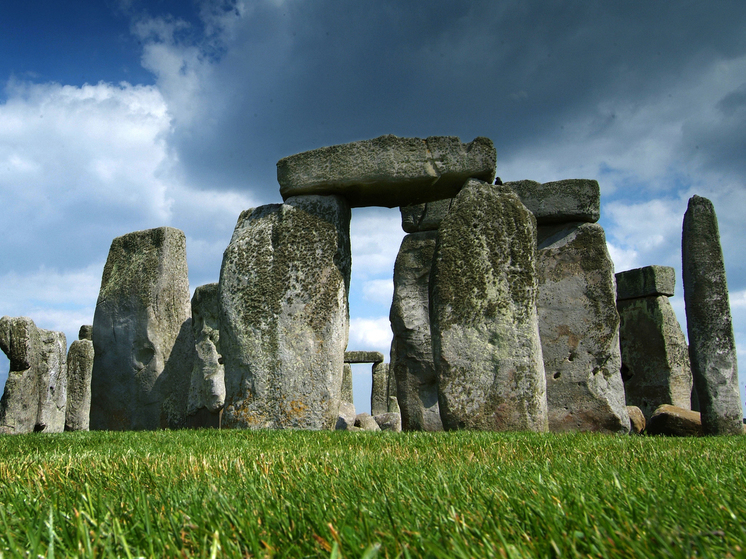The central stone was specially delivered hundreds of kilometers away
A discovery made at Britain's Stonehenge has highlighted the mystery of this gigantic structure, since, as it turned out, its central stone “was not brought from Wales,” but from other places located hundreds of kilometers away.

'Truly shocking' finds shed new light — and mystery — on Stonehenge's famous protruding stones and raise a key question: why is the central stone so important?
The altar stone at the centre of Stonehenge was brought 500 miles from northern Scotland rather than Wales as previously thought, according to new research, Sky News reports, adding to the intriguing mystery of the Neolithic structure.
Geological analysis has shown that the six-tonne stone almost certainly came from the Orcadian Basin, a rock deposit that stretches across northern Scotland from Inverness to the Orkney Islands.
It's a «truly shocking result,» said study co-author Dr Robert Ixer, of University College London. He said the work raises two important questions: why and how was the Altar Stone transported from the far north of Scotland, more than 700km away, to Stonehenge?
Archaeologists are not sure exactly when the altar stone was brought to the prehistoric site in southern England, but it is thought to have been added during the second phase of construction, sometime between 2620 and 2480 BC.
The smaller stones, known as bluestones, which form the inner horseshoe and outer circle, are known to have come from the Preseli Hills in west Wales.
In the twentieth century, the Altar Stone, made from a type of sandstone, was thought to have been taken somewhere along the way to Stonehenge, perhaps near Swansea.
But in a new study that is causing textbooks to be rewritten, geologists have used methods used in the mining industry to study mineral crystals in sandstone. Not only were various types of minerals discovered there, but also, based on the results of studying traces of radioactive uranium in crystals, scientists obtained an atomic clock, which could be used to determine the age of the stone.
This gave the stone its unique colouring, which was 95 per cent certain to have come from north-east Scotland, according to the study, published in the journal Nature.
So how was this huge stone transported across vast distances? Lead author Anthony Clarke, from Curtin's School of Earth and Planetary Sciences in Australia, said analysis showed that the individual mineral grains in the altar stone were mostly between 1,000 and 2,000 million years old, while other minerals were around 450 million years old.
«This,» Clarke said, «gives a clear chemical fingerprint that the stone came from the Orcadian Basin in Scotland.»
Now scientists are confident that the altar stone was deliberately transported, rather than carried south by glaciers during the Ice Age.
One theory is that the stone may have been transported on a raft along the coast of Britain, as mountains and dense forests would have made it difficult to transport by land, Sky News notes.
However, it is unclear what exactly was so special about the sandstone of north-east Scotland that made it worthwhile to transport it long distances and at great expense to southern England.
Professor Chris Kirkland, a co-author of the study from Curtin University in Australia, said the findings were significant. «Our discovery of the altar stone's provenance highlights the significant levels of social co-ordination in the Neolithic period and helps paint a fascinating picture of prehistoric Britain,» he said.
«Transporting such a huge load overland from Scotland to southern England would have been an enormous challenge,» Professor Kirkland said. «It points to a likely maritime route along the coast of Britain. This implies long-distance trade networks and a higher level of social organisation than is generally thought to have existed in Neolithic Britain.»
The earliest known major building work at Stonehenge was carried out around 3000 BC, Sky News reports. It was on a site surrounded by a circular ditch and bank and may have had vertical wooden posts. The second phase of construction, which began around 2500 BC, involved the raising of the stones. The larger stones, weighing up to 30 tonnes, are thought to have come from the Marlborough Downs, 20 miles away.
The smaller bluestones weigh between two and five tonnes, Sky News reports. Although they have different geology, they come from the same area of west Wales.
Professor Richard Bevins, co-author of the study from Aberystwyth University, said the findings challenged what had been thought about Stonehenge throughout the 20th century.
«While we can now say that the iconic stone is Scottish rather than Welsh in origin,» said Bevins, «the search for where exactly in north-east Scotland the altar stone came from is still ongoing.»





















































Свежие комментарии